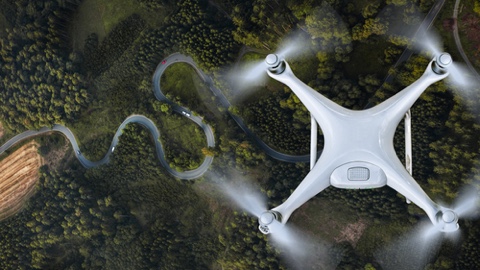
EMOTIV – a bio-informatics and technology company – has developed a lightweight, plastic headset that is an electroencephalogram (EEG) device which picks up your brain’s electrical impulses through non-invasive sensors on your scalp, records them on a computer, and then translates those thought patterns into flight instructions for a small drone.
To built up a database of how the brain functions under different conditions, the company has distributed 80,000 headsets that are being used by 120,000 people in 120 countries.
“What is more important than the hardware is the fact that we have this community of people that are sending us the data, and that we’ve got the data scientists and machine learning and deep-learning algorithms that allow us to identify patterns,” said Olivier Oullier, president of Emotiv.
A similar mind-controlled drone – the Puzzlebox Orbit – was developed by a team from Stanford University and released to the public in 2015. All source code, hardware schematics, 3D models, and the step-by-step hacking instructions were open released and published freely online. Panos Artemiadis, director of the Human-Oriented Robotics and Control (HORC) Lab at Arizona State University, thinks it is likely that drone swarms using human-brain interface mechanisms will – in the next three to five years – make in roads where individually controlled UAVs cannot. Some potential uses for these mind-controlled drone swarms include search and rescue missions, fire fighting, agriculture analysis, and cyber-physical surveillance systems.
The technology was originally designed to increase concentration and cognitive awareness. The results, says Oullier, have widespread applications.
“Think about any job where attention is required to save lives, to preserve lives. Pilots, power plant operators, surgeons, or just a person working at their desk. There are people who cannot focus for more than 45 minutes. The app tells them to take a break, go for a walk. When they come back after five minutes, their attention levels are back up, whereas if you had kept that person two hours in front of a computer, they are less efficient.”
